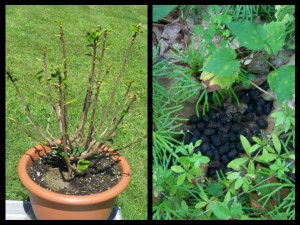As more and more homes are built in communities that feature large tracts of grasslands and woodlands, it gives us an opportunity to live close to nature and enjoy the abundant wildlife that lives amongst us. We can observe birds, rabbits, deer, and other wild animals in a natural setting, right outside of our patio, doors, and windows. While enjoyable to watch, some of those animals can create havoc to our landscape, and pose challenges to even the most seasoned gardener. Deer are one of those animals that love our landscape plants even more than we love to watch them, and can thwart almost any attempt to deter them. Today, I will explore some of the physical or chemical barriers that are available, but will primarily focus on deer resistant plants for Tampa landscapes.
It's no surprise that deer have become a major pest to our landscapes and gardens. They have less predators than ever before, which allows for increased populations. As well, as we build closer and closer to their habitats, they become less intimated by human presence. Often, we don't realize that we have a deer problem as they may only be present at late dusk and early dawn. However, if you have damage to your plants, like the Hibiscus in the above photo, or see droppings similar to the photo on the right, you have a deer problem. Some of their favorite plants are Roses, Indian Hawthorn, and Hibiscus, and once they know that you have them in your landscape, they will make regular feeding trips. The easiest way to tell for certain is if the leaves are stripped off the top and sides of the plants, exposing only the stems.
So, if you have determined that you do have deer eating your landscape plants, you can try a few measures to deter them. Small fencing barriers may be effective in some locations, while coyote urine or deer repellant may work in dry areas that receive little or no irrigation or rainfall. Another option is to relocate your favorite plants close to the home's front entrance, but even that may not prevent the bolder ones from venturing closer to human foot traffic.
If you have tried barriers, scents and repellants, and relocating plants to "safe zones", and nothing has worked, you may just have to consider landscaping with deer resistant plants. There are many wonderful deer resistant plants for Tampa landscapes, and with a little knowledge, you can create a beautiful landscape that will discourage the deer from making a nightly feeding trip to your home. While deer will eat just about anything, they will mostly leave these plants alone, after an initial taste test:
- Pinwheel Jasmine
- Crinum Lily
- Junipers, all varieties
- Holly, all varieties
- Pittosporum
- Podocarpus
- Society Garlic
- Ligustrum
- Viburnum, all varieties
- Bird of Paradise
- Agave
- Bromeliads
- Crossandra
- Penta
- Iris
- Most grasses, such as Pampas, Fountain, Muhly, Adagio, Fakahatchee
- Jatropha
- Ixora
- Gold Mound and Duranta
- Bamboo
- Palms
- Allamanda
- Azalea
- Bottlebrush
- Boxwood
- Bush Daisy
- Coontie, King Sago, and Cardboard palms
- Downy Jasmine
- Shiny Jasmine
- Dwarf Firebush
- Lantana
- Nandina
- Oleander
- Plumbago
- Philodendron, all varieties
- Oyster plant
- Mexican Petunia and Dwarf Mexican Petunia
This list is by no means complete, but you can always call our office if you have any questions about a particular plant, or you are welcome to add to this list based on your experience. As a fail safe method, I will install a sample plant in a yard that I know has regular deer activity. While it might be nibbled on, the deer may only be testing it. If it is mostly left alone over a few weeks, than I feel comfortable using it in my design. As always, have fun and experiment......that's half the joy of gardening!

